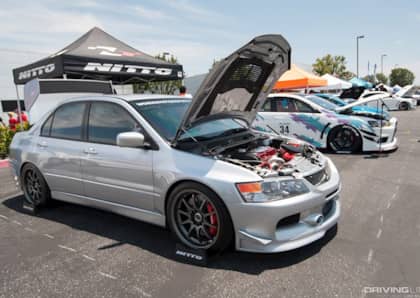DSM Legend: Have the Mitsubishi Eclipse & Eagle Talon Been Forgotten?
Ah yes, Mitsubishi. In case you didn't know, the Japanese automaker is still around today, offering a selection of crossover SUVs and a couple of cheap economy cars that aren’t especially competitive or remarkable.
But it wasn’t always this way. This is the brand that brought the world iconic enthusiast vehicles like Lancer Evolution, 3000GT VR4 and a series of ultra-rugged 4x4s that were beloved across the planet.

Here in the US though, the most popular high performance Mitsubishi may have been the Eclipse. Along with its close siblings the Eagle Talon and Plymouth Laser. For a period these high performance, turbocharged sport compacts offered a level of affordable performance that was once unrivaled but they've become nearly forgotten today.

Commonly known as the “DSM” among enthusiasts, this trio of cars were built as part of the long-running joint venture between Mitsubishi and Chrysler known as Diamond Star Motors.
First introduced for the 1990 model year the Eclipse and its Chrysler counterparts could be had with a turbocharged 2.0 liter four cylinder 4G63 engine that made up to 195 horsepower. This might not sound like much, but remember at the time a V8 Mustang GT was only making 225 horsepower.

Better yet, these cars could be had with all-wheel-drive which allowed them to take full advantage of their turbocharged power. 0-60 times were in the high six second range—again a scorching figure for an affordable car in the early ‘90s.

The second generation of the “DSM” debuted for the 1995 model year with the Plymouth Laser dropped from the trio: Both the Eclipse and the Talon had dramatically restyled bodies. In 1997 an open top Spyder version of the Eclipse was added to the lineup.

The turbocharged 4G63 engine continued to be the top the motor, now making 205 horsepower in stock form and available in both FWD and AWD configurations.

And while they were potent out of the box, the turbocharged DSM cars truly came into their own at the hands of tuners. While some would outfit aggressive body kits and other flashy mods, others took advantage of the platform to build some brutally quick street cars.

To see why they were such a hit, you have to remember that cars like the Subaru WRX and Mitsubishi’s own Evolution were not sold in the US at the time, making the DSM a popular choice for those looking for a cheap, AWD turbo power.
For those on a budget, it was hard to beat a used DSM when it came to bang for the buck. A few simple mods and a bit more boost and you could have a car that could embarrass some truly high end machinery, sometimes for just a few thousand bucks total.

And it’s likely because of this reputation for cheap speed that decent examples of the first and second gen DSM cars are so hard to find today. Back in the day they were cheap and seen as disposable and many were beaten out of existence.
Perhaps the peak cultural relevance of the DSM came in the original The Fast & The Furious when Paul Walker’s character drove a neon green second generation Eclipse in first half of the movie. It’s easily one of the most recognizable cars of the franchise.

By 2000 the Eagle brand no longer existed and the heavier, softer third gen Eclipse lost its turbocharged engine in favor of a V6. The model would be discontinued in 2011 before Mitsubishi brought back the name and stuck it on a crossover SUV a couple years ago.
Despite a well-earned reputation as being one of the great tuner cars of the 1990s and early 2000s, the Eclipse and its DSM counterparts haven’t enjoyed the same renaissance and appreciation of other Japanese performance cars of the era.

As cars from the 1990s continue to rise in price and popularity, it will be interesting to see if these once legendary tuner cars will become loved in the way of the Toyota Supra or Mazda RX-7.
Whatever the case, for anyone who was into sport compact cars in the late ‘90s and early 2000s the letters “DSM” will always bring back fond memories.
And if you want to hear about another turbocharged AWD machine from two different brands, check out our look at the Saab 92X.











